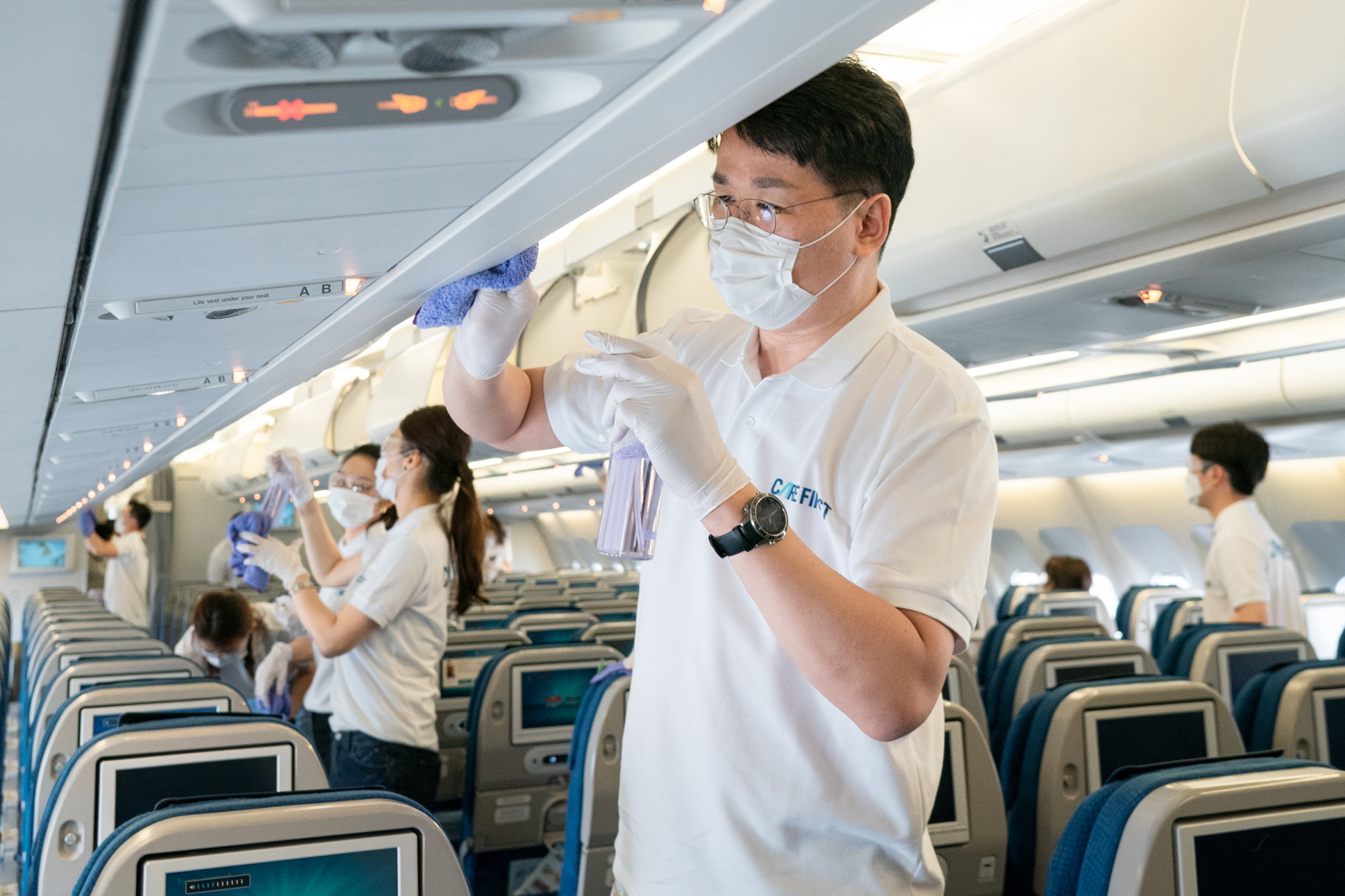|
About 30 employees and executives, including
Korean Air Chairman Walter Cho, today voluntarily participated in
the disinfection work of an Airbus A330-300 aircraft that
completed its flight on the Jeju-Gimpo route on 28 June.
After receiving training on safety guidelines and
cabin disinfection methods, they thoroughly
cleaned the seats, armrests, seat belts and meal tables as well as
windows and toilets using cleaning cloths and disinfectant.
Mr. Cho said, "Korean Air puts the
health and safety of its passengers as our top priority.
Executives and employees have come together to assure customers of
our dedication to delivering an even safer in-flight environment."

Korean Air maintains safe flights by thoroughly
disinfecting all its aircraft. The airline carries out
disinfection more often than the legal requirements. Domestic
flights are disinfected more than once a week, and additional
disinfection work is performed on all international flights
arriving at Incheon International Airport and those departing from
Incheon to the Americas.
In addition, if a passenger shows symptoms of
COVID19, the aircraft is isolated and undergoes a special
disinfection process.
Korean Air disinfects using MD-125, a
sterilization product approved by the Korean Ministry of Food and
Drug Safety and the U.S. Environmental Protection Agency (EPA). It
is known as an effective product to eliminate COVID19.
The airline also checks the temperatures of all
passengers before boarding their flight. On board, cabin crews
work in protective gowns, goggles and masks, and all passengers
are required to wear face masks during the flight. Hand sanitizer
is also available at the airport and on the aircraft.
Approximately half of
the cabin air is from outside the airplane and half is filtered
air from inside the cabin. Outside air continuously enters the
airplane through the engine where it is compressed, and cabin air
is recirculated after passing through high efficiency particulate
air (HEPA) filters, which remove almost 100% of any particulate
matter that may be present. The air is exchanged every two to
three minutes. Also, cabin air on passenger aircraft is
designed to flow from ceiling to floor rather than from front to
back, minimizing the spread of contaminants through the cabin.
Published on TravelNewsAsia.com at:
https://www.asiatraveltips.com/news20/296-KoreanAir.shtml
See latest
Travel News,
Video
Interviews,
Podcasts
and other
news regarding:
COVID19,
Korean Air,
Seoul,
Jeju.
|
Headlines: |
|
|

